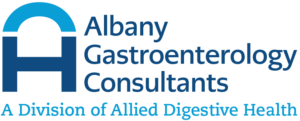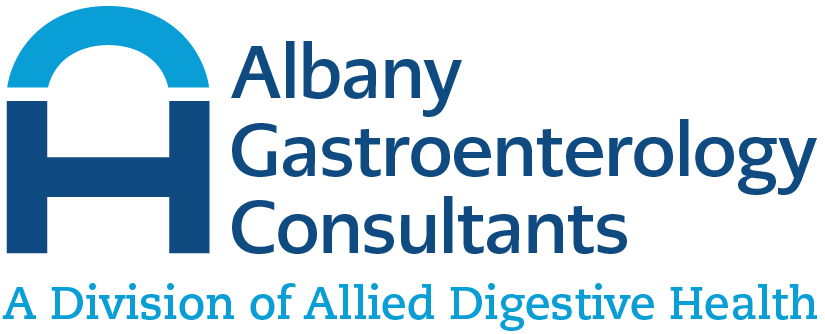What Is Upper GI Endoscopy?
Your gastroenterologist may order an upper GI endoscopy, also known as esophago-gastro-duodenoscopy (EGD), to either diagnose or treat a problem. EGD can be diagnostic as well as therapeutic. During a typical upper GI endoscopy, your physician will insert a long, thin tube with a tiny camera attached through your throat in order to examine your upper gastrointestinal tract. An endoscopy examines the esophagus, stomach, and upper part of the small intestine, known as the duodenum, to get a closer look at what may be causing symptoms, to determine the extent of a specific condition, such as cancer, or to treat an issue. Your gastroenterologist can also take a tissue sample (biopsy) during the procedure.
An upper GI endoscopy is a very common and safe procedure. It is an outpatient procedure, and you’ll return home the same day. Anesthesia via intravenous sedation is administered during the procedure so you do not feel any pain or discomfort.
Why Would I Need an Upper GI Endoscopy?
There are many reasons your doctor may order an endoscopy—everything from trying to discover what may be causing severe acid reflux to determining the stage of esophageal cancer. Some of the more common reasons your physician may order an EGD include:
- Unexplained and persistent abdominal pain
- Removal of a foreign object in the GI tract
- Difficulty swallowing
- Gastrointestinal bleeding
- Unclear findings on a previous diagnostic test
- Follow-up from a previous procedure, such as the removal of polyps
- Persistent nausea and vomiting
- Biopsy to obtain a tissue sample
If you have gastrointestinal symptoms and inform your doctor, they may order an EGD based on what your symptoms are. If you have persistent GI symptoms that last more than a few days, you should consult your physician to ensure nothing is wrong or to obtain a diagnosis. If you have the following symptoms, your physician may order an EGD:
- Trouble swallowing
- Persistent abdominal pain
- Bleeding in the gastrointestinal tract
- Continual vomiting or diarrhea
- Unexplained weight loss
- Unusual fatigue
- Severe acid reflux
The endoscopy will give your healthcare provider a clear look at your esophagus, stomach, and duodenum so they can determine the next steps.
What Is a Diagnostic Upper GI Endoscopy?
Endoscopy is primarily used to diagnose, but it can also be used to treat conditions or determine the progression of diseases. When an endoscopy is ordered to diagnose a problem, it is known as diagnostic endoscopy. The camera attached to the end of the endoscope gives your gastroenterologist clear images to diagnose conditions. An upper GI can diagnose conditions and diseases, such as celiac disease, gastroesophageal reflux disease (GERD), blockages or narrowing of the gastrointestinal tract, esophageal varices (large veins in the esophagus), swelling and inflammation of the GI tract, ulcers (sores), Crohn’s disease, infections, hiatal hernia (when the stomach moves upward into or next to the esophagus), and the discovery of tumors (benign or malignant). If your doctor suspects one of these conditions, they may order more testing or give you a diagnosis after the endoscopy.
What Is a Therapeutic Upper GI Endoscopy?
Your physician may also order an endoscopy to treat a problem. Some of the issues that a therapeutic upper GI endoscopy may be able to treat are:
- Removal of a foreign object in the gastrointestinal tract
- Control GI bleeding
- Removal of tumors or growths
- Performing thermal therapy to burn away cancerous cells
- Opening a narrowed tract
- Insertion of a feeding tube (percutaneous gastrostomy tube) into the stomach
In order to diagnose stages of a disease, your gastroenterologist will perform a biopsy and send the tissue to the laboratory for analysis. Sometimes a typical upper GI endoscopy is not quite enough to reach areas that may need a biopsy. In this case, your practitioner will order an ultrasound as well. The combination is called an endoscopic ultrasound.The endoscope contains a transducer during this procedure, which produces sound waves to give your physician a better look and clearer images. Your doctor may order EUS to examine certain growths growing in the middle layers of the upper GI tract (submucosal tumors), GI cancers such as pancreatic and esophageal cancers, or the biliary tract (collection of tubes that carry bile from the liver to the digestive tract).
EUS can also be combined with fine needle aspiration. During this type of endoscopy, a needle is attached to the end of the endoscope in order to obtain a tissue sample (biopsy). The needle, which is threaded through the endoscope, can extract fluid as well as tissue.
What Can I Expect During an Upper GI Endoscopy?
Unlike colonoscopy, which is the examination of the colon, there is not a lot of preparation for an endoscopy. Typically, your physician will ask you to fast for 8 to 12 hours before the procedure. You may also be asked to follow a special diet in the days beforehand. Be sure to let your doctor know if you have a history of bleeding disorders.
What Happens During an EGD?
Before your procedure, you’ll have a quick physical exam and a consultation with your doctor. Next, you will be given intravenous medication to sedate you. You will be asleep during the procedure and not feel pain or discomfort. It’s possible that your healthcare provider will also administer a local anesthetic to the back of your throat, so you don’t cough or gag during the endoscopy. The doctor will then insert a long, thin tube through your throat and into your esophagus, stomach, and duodenum. When the test produces enough images for the doctor to examine, they will remove the tube. After the procedure, you will be taken to a recovery room to rest and be monitored for about an hour. Afterward, you are discharged to home. Ensure you have someone to drive you home because of the sedatives and rest for the remainder of the day. Most patients return to normal activities the next day.
Are There Any Risks with Upper GI Endoscopy?
There is always a small amount of risk when it comes to any type of surgical procedure, but upper GI endoscopy is a safe, painless procedure that usually does not cause side effects. You may have some stomach bloating immediately after the procedure, but this should go away by the time you leave the recovery room. Other complications include a sore throat, abdominal cramps, and nausea. Serious complications, such as serious internal bleeding, gastric or intestinal perforation, are rare and occur less than 1% of the time.

